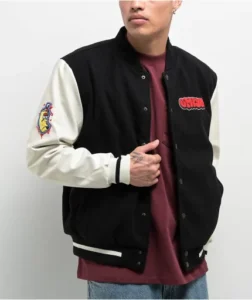
Box manufacturers in California play a vital role in a wide range of industries by producing packaging solutions that ensure products are safely transported, stored, and sold. From corrugated cardboard boxes to custom-designed packaging, these manufacturers are an essential part of the supply chain, influencing everything from e-commerce to retail to logistics.
Types of Boxes Manufactured
-
Corrugated Boxes
The most commonly used type of box, corrugated boxes are made from multiple layers of paperboard. The middle layer, known as the “flute,” provides the box with strength and durability, making them ideal for shipping heavier items. These boxes are used in industries like food, electronics, automotive, and more. -
Folding Cartons
These are made from paperboard and are often used for consumer goods packaging, such as for cosmetics, pharmaceuticals, and food products. They are designed to be folded flat for storage and shipping and can be customized with vibrant designs and printing. -
Rigid Boxes
Rigid boxes, also known as set-up boxes, are made from thick paperboard and are commonly used for premium products, such as jewelry, watches, and high-end electronics. These boxes are sturdy and often come with an added layer of luxury design, making them a popular choice for high-end packaging. -
Die-Cut Boxes
Die-cut boxes are custom-shaped boxes designed using specialized tools that cut the material into unique shapes. These are often used for packaging products that require a specific shape or size, making them particularly useful in the retail sector for unique displays. -
Packaging for E-Commerce
With the rise of online shopping, e-commerce packaging has become an increasingly important segment of box manufacturing. These boxes are designed not only to protect items during transit but also to enhance the unboxing experience for customers. Companies like Amazon have also started emphasizing eco-friendly packaging solutions, which has led to the development of sustainable box manufacturing techniques.
The Manufacturing Process
The process of manufacturing boxes generally involves several steps:
-
Material Selection
The first step in the manufacturing process is the selection of raw materials, such as paperboard, corrugated sheets, or recycled materials. The choice of material depends on the box’s intended use, required durability, and whether the packaging needs to be eco-friendly. -
Cutting and Shaping
Once the materials are chosen, the next step is to cut and shape them. This can be done through die-cutting, which uses specialized machines to cut the material into the required shapes and sizes. For corrugated boxes, the fluted layer is inserted between two flat sheets of material. -
Printing and Design
Many box manufacturers offer custom printing services, allowing businesses to brand their boxes with logos, designs, and other graphics. High-quality printing technologies like flexography or offset printing are used to produce clear and vibrant images. -
Assembly and Gluing
After printing, the boxes are folded and glued into shape. The edges are secured using strong adhesives to ensure the box maintains its structure during transportation and storage. -
Quality Control
Finally, the boxes undergo quality control checks to ensure they meet durability standards. This process may include testing for compression strength, stacking ability, and overall quality of the print.
Key Trends in the Box Manufacturing Industry
-
Sustainability
As consumers become more environmentally conscious, there is increasing demand for sustainable packaging. Box manufacturers are responding to this demand by using recycled materials, reducing the use of non-renewable resources, and designing packaging that is easy to recycle. -
Customization
Businesses are increasingly looking for packaging that can reflect their brand identity. Manufacturers are offering more customized solutions, allowing companies to create unique box shapes, sizes, and designs that make their products stand out on store shelves or during online unboxing experiences. -
Automation and Efficiency
The box manufacturing process has become more automated, reducing production times and costs. Advanced machinery like robotic arms and automatic folding machines allow manufacturers to produce boxes more efficiently, ensuring quicker delivery times for businesses. -
Smart Packaging
The incorporation of technology in packaging is on the rise. Some box manufacturers are exploring “smart” packaging solutions, including QR codes, RFID tags, or NFC technology, to help track products through the supply chain and offer consumers additional product information.
The Future of Box Manufacturing
As industries evolve, the role of box manufacturers will only grow. With advancements in technology, sustainability initiatives, and the increasing demand for custom-designed packaging, box manufacturers will continue to innovate. These companies are not only providing protective packaging solutions but are also contributing to a brand’s identity and customer experience.
The industry is also likely to see increased focus on reducing waste and improving the recyclability of packaging materials. Whether it’s through biodegradable packaging, less use of plastic, or more streamlined production methods, the box manufacturing sector will remain crucial in the ongoing shift toward a more sustainable economy.
Conclusion
Box manufacturers are often behind the scenes but are critical to the functioning of various industries. Their ability to create sturdy, cost-effective, and visually appealing packaging directly impacts the efficiency of supply chains and the success of businesses. As trends toward sustainability and customization continue to grow, the role of box manufacturers will evolve, making them a key player in both global commerce and the future of packaging.


